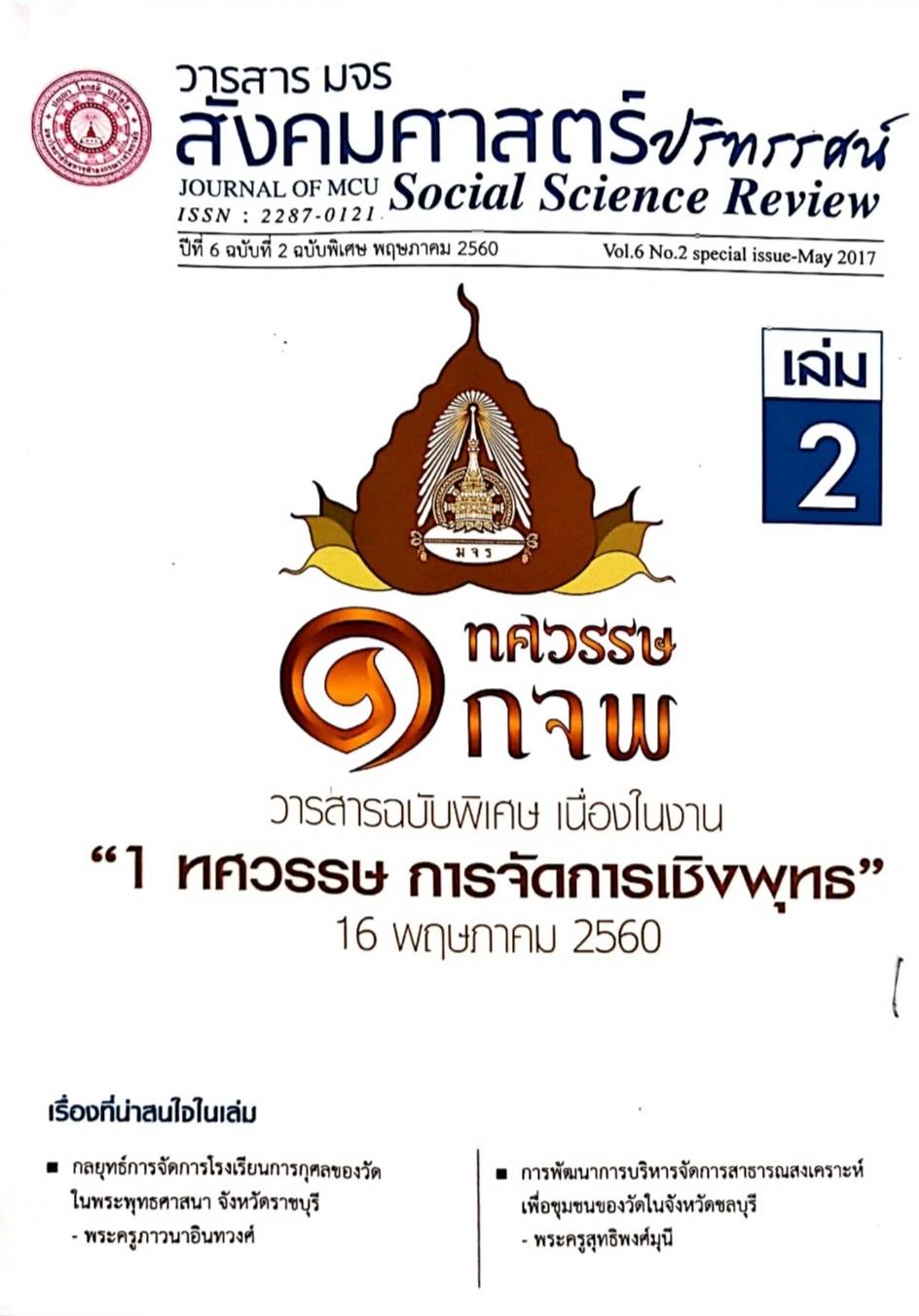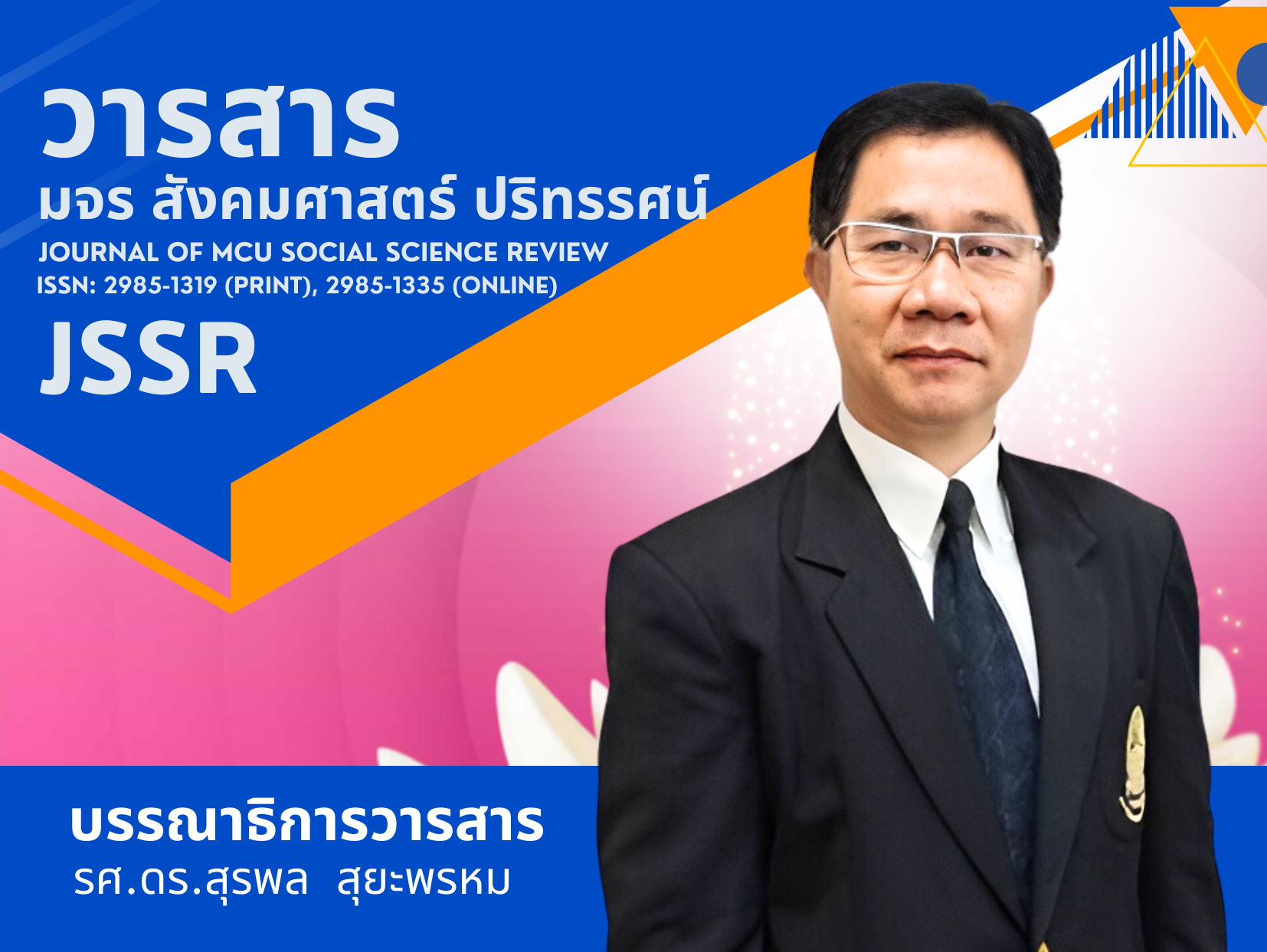DECISION-MAKING ABILITY IN SCIENCE OF MATHAYOM SUKSA 3 STUDENTS TAUGHT THROUGH YONISOMANASIKAN APPROACH.
Keywords:
Decision-making ability; Yonisomanasikan Approach; chievement; mathayom suksa 3 studentsAbstract
The purposes of this research study were 1) to study the Decisionmaking ability in science of mathayom suksa 3 students taught through Yonisomanasikan Approach and 2) to study the science learning achievement
of mathayom suksa 3 students taught through Yonisomanasikan Approach. The population of this study was 29 mathayom suksa 3 students of Phrapariyattidhamma Prajaotonluang school, Banghong District, Lamphun Province during the second semester of the academic year 2016. The instruments used in this study consisted of 1) Learning management plans taught through Yonisomanasikan Approach on the topic of Environmental and Resource 2) The Decision-making ability in science test and 3) The science learning achievement test on the topic of Environmental and Resource. Statistics used in the data analysis included mean, mean of percentage and standard deviation by using computer program. Research findings were as follows : 1. The average of decision-making ability in science post-test score of the students taught through Yonisomanasikan Approach was higher than that of pre-test ones. 2. The average of science learning achievement post-test score on the topic of Environmental and Resource of the students taught through Yonisomanasikan Approach was higher than that of pre-test ones.
References
จิรวรรณ พงศ์สุวรรณสิน. (2542). “ผลการใช้ชุดฝึกการคิดตามหลักโยนิโสมนสิการที่มีต่อการตัดสินใจแก้ปัญหาของ นักเรียนชั้นประถมศึกษาปีที่ 6 โรงเรียนวัดท่า
กฤษณา (สุชัยประชาสรรค์) จังหวัดชัยนาท”. วิทยานิพนธ์ศึกษาศาสตรมหาบัณฑิต. บัณฑิตวิทยาลัย มหาวิทยาลัยเชียงใหม่.
ทิศนา แขมมณี. (2556). ศาสตร์การสอน. พิมพ์ครั้งที่ 17. กรุงเทพฯ: สำนักพิมพ์แห่งจุฬาลงกรณ์มหาวิทยาลัย.
พระธรรมปิฎก (ป.อ. ปยุตโต). (2543). การศึกษาเครื่องมือพัฒนาที่ยังต้องพัฒนา.กรุงเทพฯ: สหธรรมิก.
ภพ เลาหไพบูลย์. (2542). แนวการสอนวิทยาศาสตร์. พิมพ์ครั้งที่ 3. กรุงเทพฯ: โรงพิมพ์ไทยวัฒนาพานิช.
วนิช สุธารัตน์. (2547). ความคิดและความคิดสร้างสรรค์. กรุงเทพฯ: โอเดียนสโตร์.
วิศวเนตร เจริญสุข. (2552). “การพัฒนารูปแบบการจัดการเรียนรู้โดยใช้กิจกรรมฝึกคิดตามแนวโยนิโสมนสิการแบบคุณโทษและทางออกที่ส่งเสริมความสามารถในการ
ตัดสินใจ ในวิชาคณิตศาสตร์สาหรับนักเรียนชั้นมัธยมศึกษาปีที่ 3”.ปริญญาการศึกษา มหาบัณฑิต. บัณฑิตวิทยาลัย มหาวิทยาลัยทักษิณ.
สายพิณ มีสุข. (2545). “ผลการสอนตามแนวโยนิโสมนสิการที่มีต่อความสามารถในการ
ตัดสินใจและผลสัมฤทธิ์ทางการ เรียนกลุ่มสร้างเสริมประสบการณ์ชีวิตของ
นักเรียนชั้นมัธยมศึกษาปีที่ 6”. วิทยานิพนธ์ศึกษาศาสตรมหาบัณฑิต. บัณฑิต
วิทยาลัย มหาวิทยาลัยสงขลานครินทร์.
สุมน อมรวิวัฒน์. (2530). การสอนโดยสร้างศรัทธาและโยนิโสมนสิการ. พิมพ์ครั้งที่ 2.กรุงเทพฯ: สำนักพิมพ์โอเดียนสโตร์.
Beyer. B. K. (1987). Practice Strategies for Teaching of Thinking. Boston: Allynand Bacon.
Downloads
Published
How to Cite
Issue
Section
License
Copyright (c) 2020 Journal of MCU Social Science Review

This work is licensed under a Creative Commons Attribution-NonCommercial-NoDerivatives 4.0 International License.
In order to conform the copyright law, all article authors must sign the consignment agreement to transfer the copyright to the Journal including the finally revised original articles. Besides, the article authors must declare that the articles will be printed in only the Journal of MCU Journal of Social Sciences. If there are pictures, tables or contents that were printed before, the article authors must receive permission from the authors in writing and show the evidence to the editor before the article is printed. If it does not conform to the set criteria, the editor will remove the article from the Journal without any exceptions.




